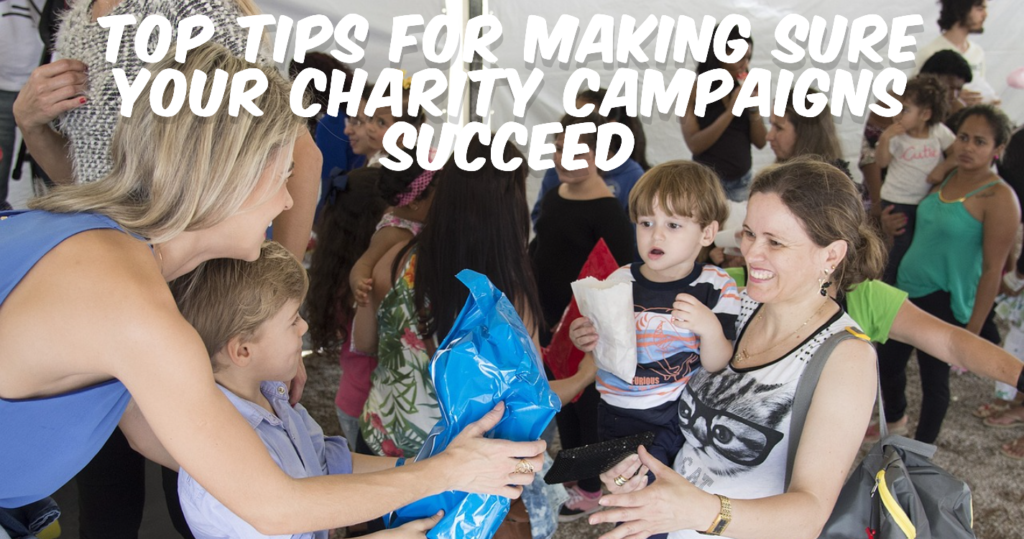Running a successful charity campaign is about more than spreading awareness—it’s about creating a meaningful connection with your audience and driving action. Whether your goal is raising funds, building a volunteer base, or advocating for a cause, success hinges on innovative approaches and strategic execution. To help your charity campaigns thrive, we’ve outlined practical tips that go beyond the basics, ensuring your efforts resonate and deliver impactful results.

Tip 1: Focus on Community Involvement
The most successful charity campaigns are deeply rooted in their communities. Engaging local audiences creates a sense of shared purpose and belonging, which can drive long-term support for your cause.
How to Build Community:
- Host Local Events: Organize workshops, open houses, or community service days that allow people to interact with your charity firsthand.
- Collaborate with Local Businesses: Partner with cafes, shops, or schools to spread your message through co-branded materials or joint events.
- Leverage Community Leaders: Engage influencers or respected local figures to endorse your campaign and amplify its reach.
Example:
A charity focused on food security could collaborate with local farmers’ markets to create a campaign that promotes sustainable agriculture while raising funds for hunger relief programs.
Tip 2: Incorporate Gamification for Engagement
Gamification transforms campaign participation into an exciting, interactive experience, encouraging people to stay involved while making the process fun. By introducing competitive or reward-based elements, you can motivate your audience to take action and share your message.
How to Use Gamification:
- Set Challenges: Create a leaderboard where participants earn points for fundraising or completing specific actions, like walking miles for a virtual challenge.
- Offer Incentives: Reward top contributors with shout-outs, digital badges, or exclusive access to events.
- Encourage Team Participation: Allow groups to form teams, creating a sense of camaraderie and competition.
Example:
A health-focused charity could launch a “Step Challenge” where participants log their daily steps, share their progress on social media, and raise donations for each milestone they reach.
Tip 3: Leverage Personalization at Every Touchpoint
Personalization is a powerful tool for building deeper connections with your audience. By tailoring your messaging to individual preferences, interests, or past interactions, you can make every supporter feel valued and appreciated.
Ways to Personalize Campaigns:
- Dynamic Email Content: Use data to create customized emails that address supporters by name, reference their previous donations, or suggest actions tailored to their interests.
- Customized Landing Pages: Create landing pages specific to donor segments, such as first-time donors or long-term supporters, with content that speaks directly to their journey.
- Segmented Social Media Ads: Deliver ads based on audience demographics, behaviors, or geolocations to ensure relevancy and maximize engagement.
Example:
A charity supporting animal welfare might send personalized emails highlighting a specific rescued animal’s story and showing how the recipient’s contributions directly helped.
Tip 4: Highlight Impact Through Visual Demonstrations
While many campaigns rely on words to share their story, visuals can often speak louder. Using impactful images, videos, and infographics to demonstrate your work brings your cause to life and makes it easier for supporters to understand your mission.
How to Use Visuals Effectively:
- Before-and-After Stories: Show progress with visuals that highlight the tangible impact of your efforts, such as a completed school or restored natural habitat.
- Infographics for Data: Present complex statistics or outcomes in visually engaging formats that are easy to understand and share.
- Interactive Visuals: Create virtual tours or 360-degree videos to immerse viewers in your work.
Example:
A charity combating homelessness could create a short video showing the journey of a beneficiary from housing insecurity to stability, highlighting the support they received and the difference it made.
Tip 5: Integrate Digital Tools to Enhance Campaigns
Digital tools can streamline your campaign efforts, improve efficiency, and help you connect with your audience across multiple channels. From fundraising platforms to analytics tools, the right technology can transform the way you execute your campaign.
Recommended Tools:
- Fundraising Platforms: Use tools like GoFundMe or JustGiving to create user-friendly donation pages.
- Social Media Management Software: Platforms like Hootsuite or Buffer allow you to schedule posts, track performance, and engage with followers effectively.
- Analytics and Insights: Use Google Analytics or social media insights to monitor traffic, engagement, and conversion rates, refining your approach as needed.
For additional guidance, partnering with experts like Eleven Creative Agency can help you leverage technology effectively and create tailored campaigns that reach your target audience.
To Conclude
Ensuring your charity campaigns succeed requires creativity, strategy, and a deep understanding of your audience. You can create campaigns that resonate deeply and drive meaningful change by focusing on community involvement, gamification, personalization, partnerships, and impactful visuals. Pairing these efforts with innovative digital tools and strategies for long-term sustainability will set your charity up for continued success.
For charities seeking to elevate their campaigns further, partnering with professionals like can provide the expertise needed to create tailored, impactful campaigns. With thoughtful execution and a commitment to your mission, your charity can inspire action and make a lasting difference in the world.